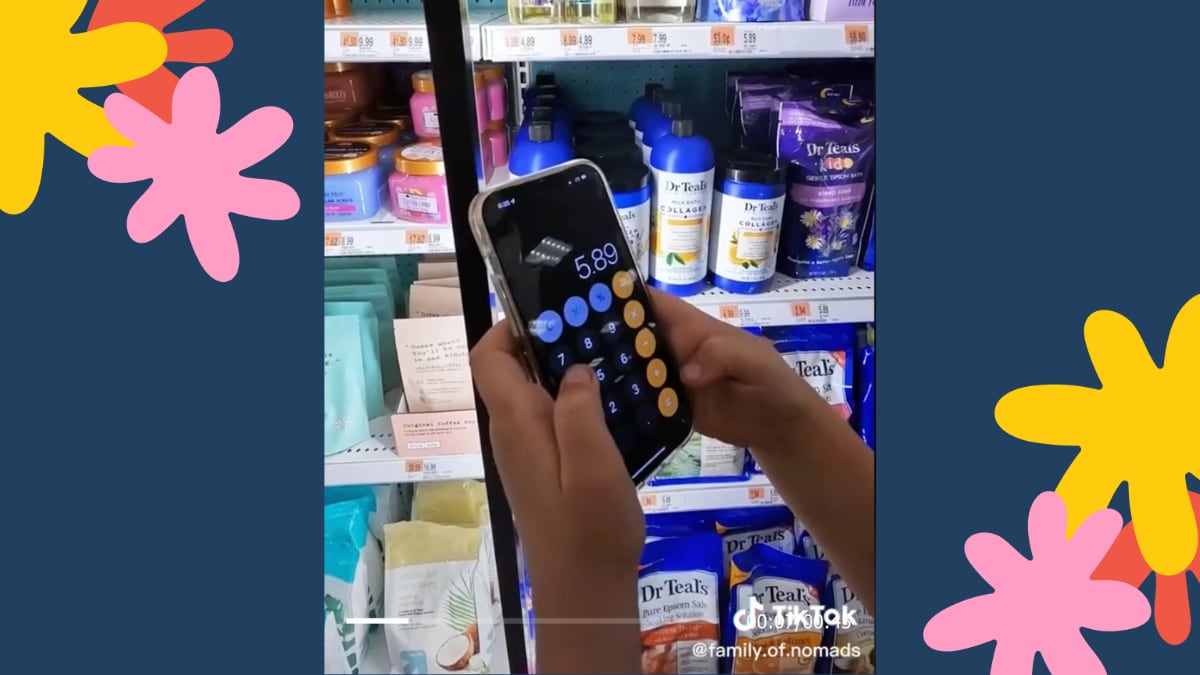Chore lists and weekly allowances are common tools for teaching kids how to manage money, but one family on TikTok is going viral for an approach to childhood financial education that’s a little more unique.
Jessica and Dub McCorkle, a pair of traveling homeschool parents who run the popular TikTok account @family.of.nomads, recently introduced other parents to the “hygiene budget.” It’s a quarterly allowance each of their three kids gets to track and spend on hygiene and personal care items, and it’s getting mixed reactions.
What is a ‘hygiene budget’?
In a video on TikTok, Jessica McCorkle breaks down the details of how her family’s hygiene budgeting system works.
Each of their three kids gets a set amount to spend on hygiene products of their choosing over the course of three months. For example, the couple’s 9-year-old son receives $100 every three months. From there, it’s each kid’s responsibility to keep track of what items they have, what new products they need and how much money they have left to spend.
The budget amounts are determined by the unique ages and needs of each kid. If the kids skimp out on products or don’t use their money in order to try to pocket the leftover hygiene budget at the end of the three months, their future budget gets decreased.
“This does not mean that they will not have access to hygiene products,” the mom explains. “It just means that they will not get the money that’s left over at the end, and I will pick out the hygiene products for them.”
In another video, McCorkle shows her 11-year-old daughter, who gets a $115 hygiene budget, using a calculator to add up her purchases as she shops for everything from shampoo to press-on nails and hair accessories.
“We homeschool our kids on the road, and it’s very important as part of our homeschooling to teach our kids about finances,” McCorkle explains alongside the footage. “When our kids grow up, we want them to be confident in making good financing choices. One thing we want them to know is that it’s important to meet your needs before your wants.”
Should kids have to ‘budget’ for things they need?
The McCorkles’ hygiene budget idea launched a heated debate online about the best way to teach kids about money. Some people said they don’t mind an allowance for fun and frivolous purchases, but they take issue with the idea of setting spending limits on essential items like toothpaste, soap or period products.
“Parents are supposed to provide the basic needs for the child,” one person writes. “If she wants makeup, iTunes cards, press-on [nails], yeah, she pays for it. But personal items?”
Others think the parents are creating a future of financial anxiety for their kids. “My dad did this to my brother and I and we both have extreme anxiety over spending money on needs despite being comfortable financially,” one person explains.
Not everyone had negative things to say about the parents’ strategy. A lot of people applauded the McCorkle’s for teaching their kids a smart financial lesson and encouraging independence.
“Have y’all ever let your kids buy things for themselves? They love it,” one person writes. “They still get to be kids while preparing to be independent. This is awesome!”
“I wish my parents did something like this,” another person adds. “It helps the kids learn young how to budget and get things they need first and want last. It’s smart!”
The benefits of teaching kids how to manage money
A hygiene budget may not be everyone’s style, but science does support teaching financial literacy to kids. A 2022 study from Brigham Young University found that kids who learn money management from their parents may go on to have more fulfilling relationships as young adults. Another study by the Brookings Institution shows that teenage financial literacy is correlated with greater asset accumulation and net worth by age 25.
Jessica McCorkle says her goal with her kids is not to create stress or force them to go without things they need. Instead, they get a generous budget that allows them to learn about money and even have a little bit of fun.
“This is money we would have been spending anyway on hygiene products, but the kids just get to choose how the money is spent,” she explains. “This gives them a better understanding of how much things cost and teaches them about money and how to budget.”




